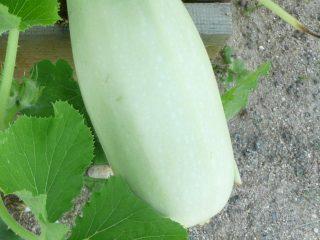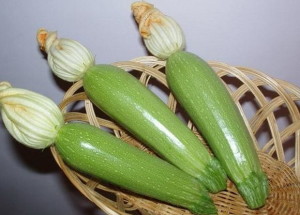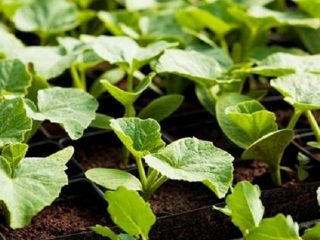Content
Zucchini rots for a variety of reasons, but they are mainly associated with improper care. Due to dense planting and excessive watering, the leaves, ovaries, and then the fruits will begin to rot and may even die. For prevention, it is necessary to observe the watering norm, regularly ventilate the greenhouse and inspect the plantings.
Why do zucchini ovaries rot in open ground?
If zucchini inflorescences, fruits or leaves rot, the reasons can be very different. When grown in open ground, the weather factor can affect it - rainy and cool summers provoke rotting and the spread of fungal infections. But often this phenomenon is associated with errors in care.
Weather
Due to unfavorable weather, the ovary, leaves, fruits, and stems of zucchini begin to rot. The culture is thermophilic, so it does not withstand long-term cool weather, especially in combination with temperature changes and high humidity levels (rains, cloudy skies).
Due to cold and dampness, zucchini weakens and may rot.Their immunity decreases, the ovaries form poorly, and those already formed fall off. Productivity decreases sharply, since there are significantly fewer pollinators in cloudy weather. It is difficult to influence this reason - it is necessary to grow the crop in a greenhouse or in a greenhouse under a film.
Deficiency or excess of microelements
Zucchini can rot due to violation of the feeding regime. Rotting is especially often observed against the background of a lack of microelements such as iodine and boron. In this case, the bushes rot and drop their buds.
But excess nutrients are also bad. When soil becomes saline, its pH changes. Therefore, the roots absorb new organic matter and water worse and worse, and the ovaries begin to rot and fall off.
It is especially dangerous to exceed the dosage of nitrogen fertilizers. Because of them, plants quickly gain green mass, and large leaves appear on the bushes. They prevent the access of light and air, which is why individual parts actually begin to rot.

Rotting may be due to a lack or excess of fertilizers
Unsuitable site
To prevent the ovaries and other parts of the zucchini from rotting, you must carefully select the planting site. It must meet several criteria at once:
- completely open (no shade);
- without stagnant water (not in lowlands);
- with fertile, loose soil;
- protected from draft winds, for example, by a fence or greenhouse.
Planting density
One of the reasons why zucchini ovaries rot is due to the density of the plantings. Often, gardeners, trying to save space, place seedlings too close to each other.As a result, it is possible to place many plants on the site, but they prevent the evaporation of moisture from the soil and natural air circulation. To prevent zucchini from rotting, it is better to plant them in a checkerboard pattern with an interval of at least 60 cm.
Violation of crop rotation rules
Zucchini should not be planted in the same bed for three years in a row or more. It is dangerous to grow a crop after representatives of the same pumpkin family (squash, cucumbers). They have common diseases and pests, which can also cause zucchini to rot.
The best predecessors are:
- beans;
- Vika;
- green pea;
- beans;
- lentils.
Excessive watering
Like all pumpkins, zucchini love water, but overwatering causes them to rot and may even die. Plants need regular, even watering. Give water twice a week, making sure that the soil does not dry out, but at the same time is not too wet. To prevent water from evaporating quickly, it is necessary to lay out a layer of mulch.
Another important point is to avoid watering with cold water. Temperature changes have a bad effect on the root system of the plant. In addition, it is important to monitor the weather forecast. Even if short-term rains are expected, it is not recommended to give additional water.
Poor pollination
If zucchini flowers are rotting in the garden bed, this may also be due to insufficient pollination. This phenomenon is especially often observed in greenhouses, where insects have difficult access.It is necessary to regularly keep the door open and plant flowers nearby to attract bees. On the other hand, you can also use self-pollinating hybrids, for example:
- Sangrum F1;
- Jellyfish F1;
- Cavili F1;
- Suha F1;
- Squash tree F1 and others.

Sukha F1 is one of the hybrids that does not require pollinators
Fungal diseases
A separate group of reasons why plants begin to rot is associated with fungal diseases. The crop is quite often affected by powdery mildew. This is an infection that manifests itself with the following symptoms:
- A whitish “floury” coating on foliage, inflorescences, and ovaries.
- White spots turn into red, then into black.
- Leaves, inflorescences and ovaries begin to rot. They become covered with black spots.
Another reason is blossom end rot. It first affects the leaves, then spreads to the newly emerged ovaries. All affected parts of the plants lose their normal shape, rot and begin to fall off.
However, this disease, unlike powdery mildew, is not infectious. It is associated with a lack of calcium. To stop plants from rotting, they should be fed, for example, with calcium nitrate.
Why do small zucchini rot on a bush in a greenhouse?
This phenomenon has its own characteristics - the main reasons are:
- Insufficient ventilation - the air humidity level is too high, the ovaries and fruits begin to rot.
- Lack of fertilizers, especially potassium and phosphorus.
- Lack of sunlight due to dense planting or greenhouse.
- Too much manure, humus and other organic matter in the soil - because of this, zucchini gain green mass and begin to rot.
- Excessive watering combined with insufficient ventilation is another reason why zucchini spoils.
- The problem with pollination is completely solved if you choose a self-pollinating variety.
What to do if zucchini ovaries rot
It is necessary to establish the cause of rotting of the ovary. If the plants look normal, without signs of blossom end rot or powdery mildew, proceed as follows:
- completely stop watering for 5-7 days;
- carefully loosen the soil, remove weeds;
- remove all rotten parts;
- after the soil has dried, feed the zucchini with complex fertilizer, excluding nitrogen (it is better to give superphosphate 40 g per 10 l and potassium sulfate 30 g per 10 l).

If the soil is too wet, stop watering for a week.
If zucchini ovaries rot due to infection, the plantings must be immediately treated with a fungicide:
- "Maksim";
- "Tattu";
- "Fundazol";
- "Bordeaux mixture";
- "Fitosporin".
All diseased plantings are immediately removed and burned. It will no longer be possible to help them, and if left in the soil, they can infect healthy zucchini.
How to prevent zucchini rot
To prevent rotting of zucchini, it is recommended to follow basic preventive measures:
- Water moderately, no more than twice a week, depending on the weather forecast. Use only pre-settled water. To prevent the fruits and ovaries from rotting, water is poured exclusively at the root, avoiding getting on the leaves. It's better to work late in the evening.
- To prevent zucchini from rotting in the greenhouse, the room is regularly ventilated. If the temperature outside at night does not drop below +14, the greenhouse is left open around the clock.
- If the summer is rainy, be sure to remove the lower, old foliage. It interferes with normal soil evaporation and leads to air stagnation.
- Remove all wilted buds in a timely manner, cut them off and burn them.
- Regularly inspect the bushes for signs of invasion and diseases.If the zucchini begins to rot, the affected plant is removed, and the rest are treated with a special preparation.
- When the fruits begin to form, place dry cardboard or a wooden board under them.
- If there is a cold summer in the region, it is better not to risk it and grow zucchini in a greenhouse or greenhouse.
Conclusion
Zucchini rots mainly due to improper care. Although this phenomenon is often observed in cold, cloudy weather. It is better to grow the crop in a greenhouse, and the plantings should be placed at a distance of 60-70 cm. During care, it is important not to give too much water, regularly fertilize, and, if necessary, remove the lower foliage.








